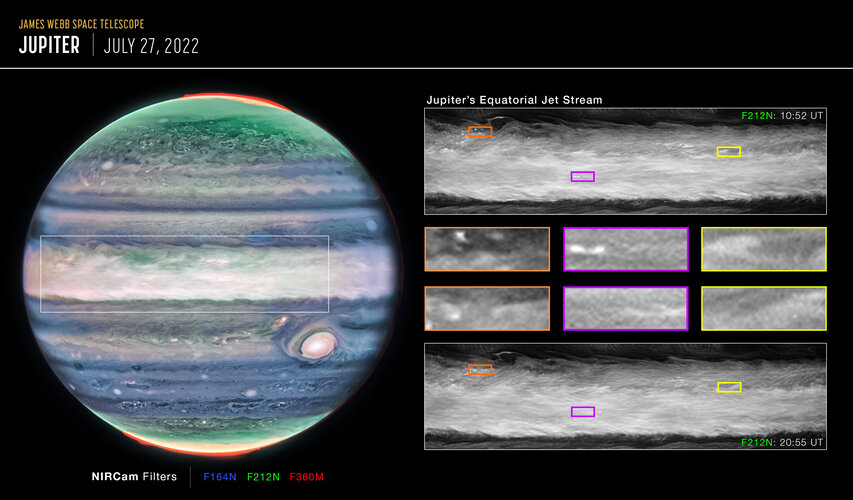Researchers spotted several wind shears, or areas where wind speeds change with height or distance, which enabled them to track the jet. The jet is travelling at 515 km per hour and is located in Jupiter’s lower stratosphere, just above the tropospheric hazes, next to the boundary between the troposphere and stratosphere layers.
This image highlights several of the features around Jupiter’s equatorial zone that, during one rotation of the planet (10 hours), are very clearly disturbed by the motion of the jet stream. The discovery of this jet provides insight into how the layers of Jupiter’s famously turbulent atmosphere interact with each other, and how Webb is uniquely capable of tracking those features. Researchers are looking forward to additional observations of Jupiter with Webb to determine if the jet’s speed and altitude change over time.
These results were recently published in a paper in Nature Astronomy.



